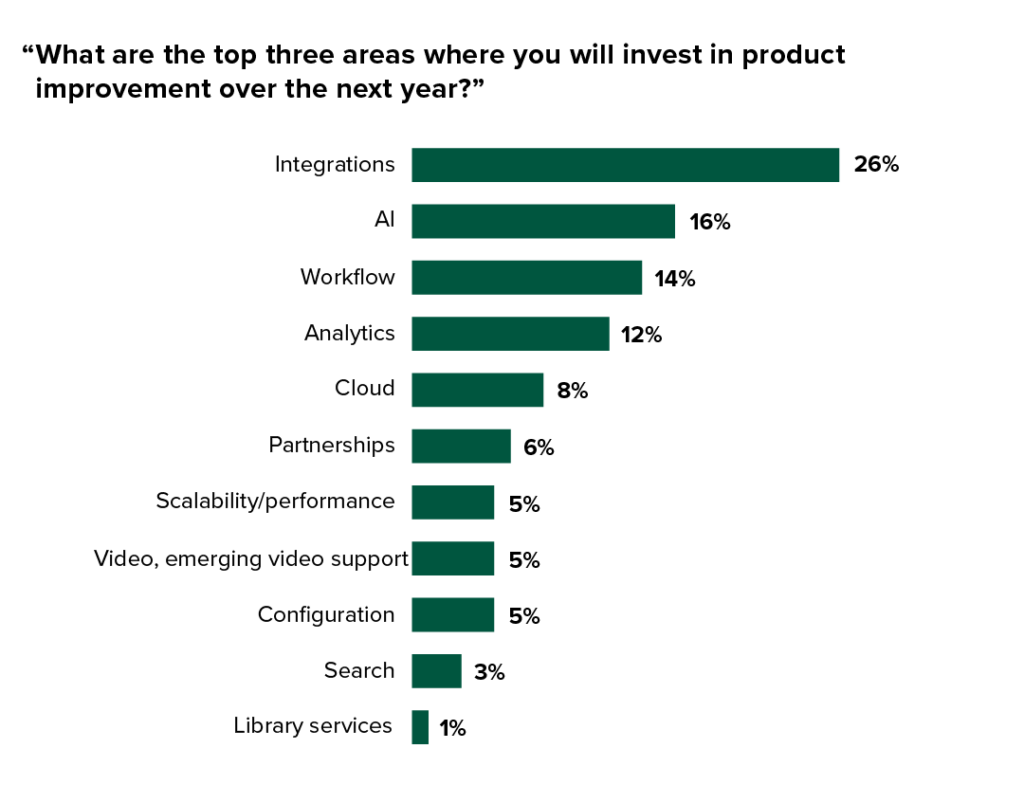The Market Remains Hot As We Kick Off Our Next Forrester Wave™ Evaluation Of The DAM Landscape
You should give a DAM about the DAM market and your DAM needs. More than 60% of the users we surveyed already give a DAM. Because of this heat in the market, strong growth, and, most importantly, customer need, we’re kicking off our next Forrester Wave evaluation on digital asset management in October. The volume of engagement with our user clients remains high across both inquiries and advisories. (If you’re not familiar with the Forrester lingo, inquiries are 30-minute Webex sessions, and advisories can be hours- or days-long deep dives.)
Many of the conversations with brands are about the new adoption of DAM because they’ve hit a wall. Some of the top reasons I hear include:
- We can’t get by with our antiquated process for content creation. One company in the manufacturing space told me that they used spreadsheets and email as their workflow system. They shouldn’t be embarrassed, because this is common for brands that are trying to fill content needs. DAM can add some lightweight (or heavyweight) governance around your content production process with review and approvals, task assignments, and even integrations into your existing systems (Workfront, Wrike, etc.).
- Our need for content is outstripping our ability to create it. They’ve got the challenge of doing more with less. And DAM can help fill some of the gaps. It centralizes content into a single repository, enriches it with metadata, and helps support content atomization. By breaking content and assets down into smaller components, they can be combined and reused in new ways. This helps brands unlock their ability to scale content production.
- We want to build the foundation for personalization. Lots of companies are good at knowing their customer, but that’s only half the battle when it comes to personalization. You need to know your content, too. DAMs have AI that can help add missing metadata. Some DAMs offer trainable AI or industry-specific AI so that you can get more specific descriptions of content. For example, if I’m an auto manufacturer, it’s not going to help me if everything is tagged “car.” Instead, I want to know the make and model.
- SharePoint, Dropbox, Box, Google Drive, etc., doesn’t work well as a DAM. That’s because they’re not DAMs! They’re cloud storage, and they are great at what they do, but they don’t offer the integrations, scalability, and support for the creative workflow that DAMs do. In fact, integrations top the list when we asked vendors where they are prioritizing their development. That’s great news for DAM users, because it means the DAM becomes even more part of the fabric of the organization rather than another content silo.

We’re seeing the DAM market grow at 15–20% year over year, and there has been continued consolidation. Most recently, Acquia announced that it will buy Widen in a deal it expects to close at the end of September. Until that announcement, Widen remained one of the few stand-alone DAM vendors left in the market (Bynder and Canto would be the others from our last Wave evaluation of the space). We also saw Hyland buy Nuxeo (Hyland also bought Alfresco in the enterprise content management space) and Smartsheet buy Brandfolder — both happened within the last year.
As we kick off this next round of the Wave, don’t wait if you have questions. Set up an inquiry with me now to get on the right track with your DAM strategy.
